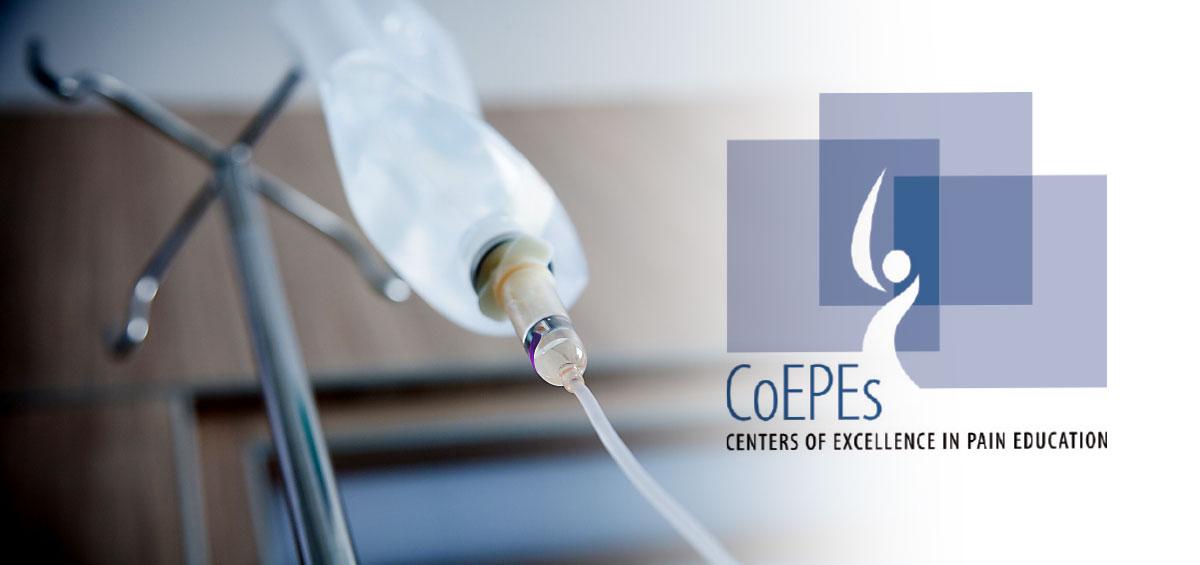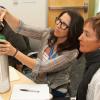
Helping Clinicians Ease Patients’ Pain
A June 2011 report released by the Institute of Medicine (IOM) – titled Relieving Pain in America: A Blueprint for Transforming Prevention, Care, Education, and Research – issued a clear call to arms:
Pain is a major driver for visits to physicians, a major reason for taking medications, a major cause of disability, and a key factor in quality of life and productivity. Given the burden of pain in human lives, dollars, and social consequences, relieving pain should be a national priority.
In response to the IOM report, the National Institutes of Health (NIH) issued a call for proposals, seeking health care institutions ready to contribute to improvements in how clinicians learn about pain and pain treatment. In May 2012, UC San Francisco was one of 12 institutions nationwide selected as Centers of Excellence in Pain Education (CoEPEs).
David Thomas, who runs the CoEPE program, notes that the human costs of untreated or undertreated pain can be devastating and that the money spent on pain treatment is in the billions. A health scientist and administrator at the NIH’s National Institute on Drug Abuse, Thomas says, “Health care providers need to be more comfortable treating people in pain.”
A Collaborative Effort Across Schools and Disciplines
“To provide critical competencies for health care providers, we are looking at ways to replace and enhance the curriculum that is already in place…to provide a good educational foundation and demonstrate what is working and ongoing in pain management,” says anesthesiologist Mark Schumacher, who is the project manager for the UCSF CoEPE. The fledgling effort reaches across all four schools at UC San Francisco.
Christine Miaskowski – associate dean for Academic Affairs at UC San Francisco School of Nursing, American Cancer Society Clinical Research Professor, and Sharon A. Lamb Endowed Chair in Symptom Management Research – is responsible for interprofessional curriculum development from the nursing perspective, along with Linda Franck, chair of the Department of Family Health Care Nursing. Schumacher represents the School of Medicine in a similar capacity, along with physician Anna Abramson; pharmacist Sheri VanOsdol represents the School of Pharmacy, and physician and researcher Jon Levine, the School of Dentistry.
“No single profession takes care of a patient in pain, and to really advance pain management, you need all the professions working together,” says Franck, an expert in pain management for infants and children and author of the recent book Comforting Your Baby in Intensive Care. “Nurses play a key role because we are usually the first to see patients and evaluate their pain levels. It is often the nurse who mobilizes the other professionals where needed and monitors the patient for the effectiveness of treatment, while being alert to any side effects.”
A Three-Pronged Approach
All of the NIH CoEPEs must work across disciplines to produce the contract’s three main deliverables:
1. Integrate more pain education into existing curricula.
2. Contribute to an online interactive teaching portal that will teach health sciences students about pain through multimodule and interactive case-based scenarios. Students will work their way through cases with interdisciplinary and interprofessional teams.
3. Disseminate information to the health care community and general public about pain management and education.
For the last deliverable, the UCSF CoEPE has created a pain education newsletter and hosted a “Pain Summit” in May 2013, where professionals from all four schools, as well as clinicians from all of the locations where UCSF practices, attended a series of lectures and hands-on workshops that conveyed the current thinking on pain management strategies.
For the first two deliverables, the group has chosen four case modules to deliver to the NIH curriculum bank and has begun work on them. This shift to more case-based education is something that the NIH hopes can be an effective adjustment.
“Having professionals go through these cases together should enhance each discipline and leverage the contributions that each can make to the goal of pain management,” says Miaskowski.



